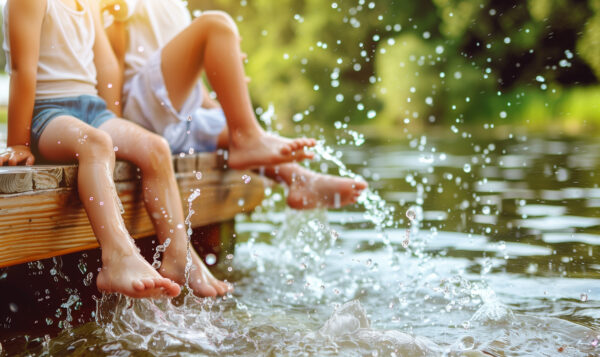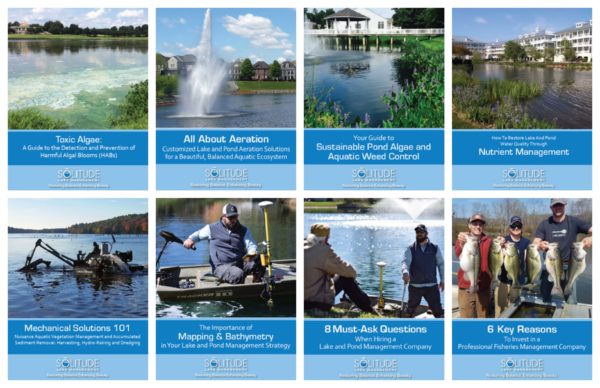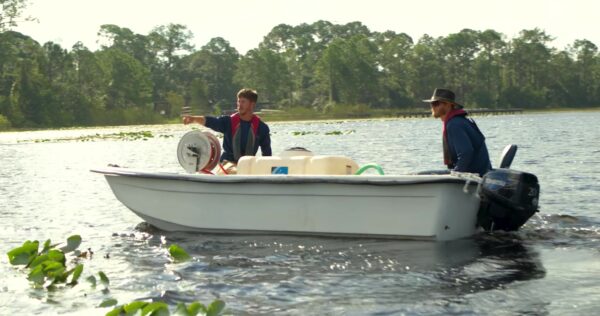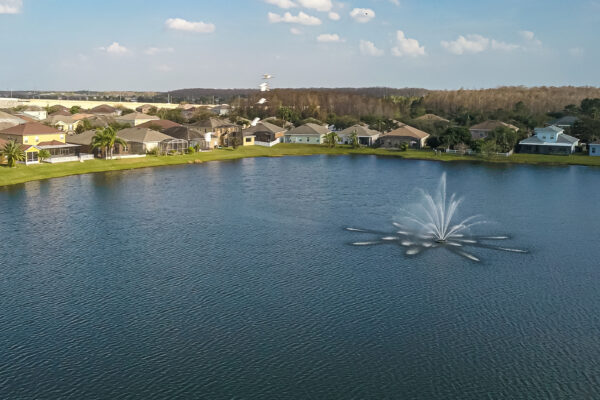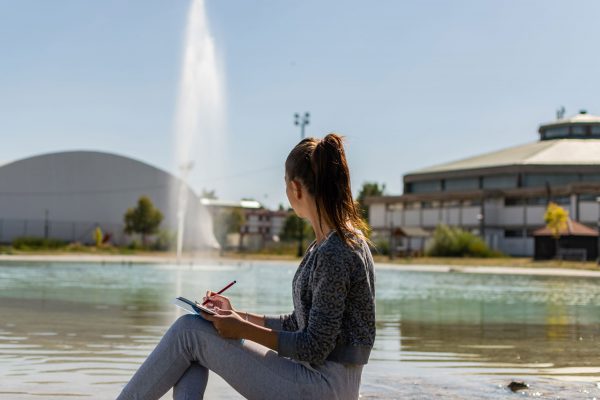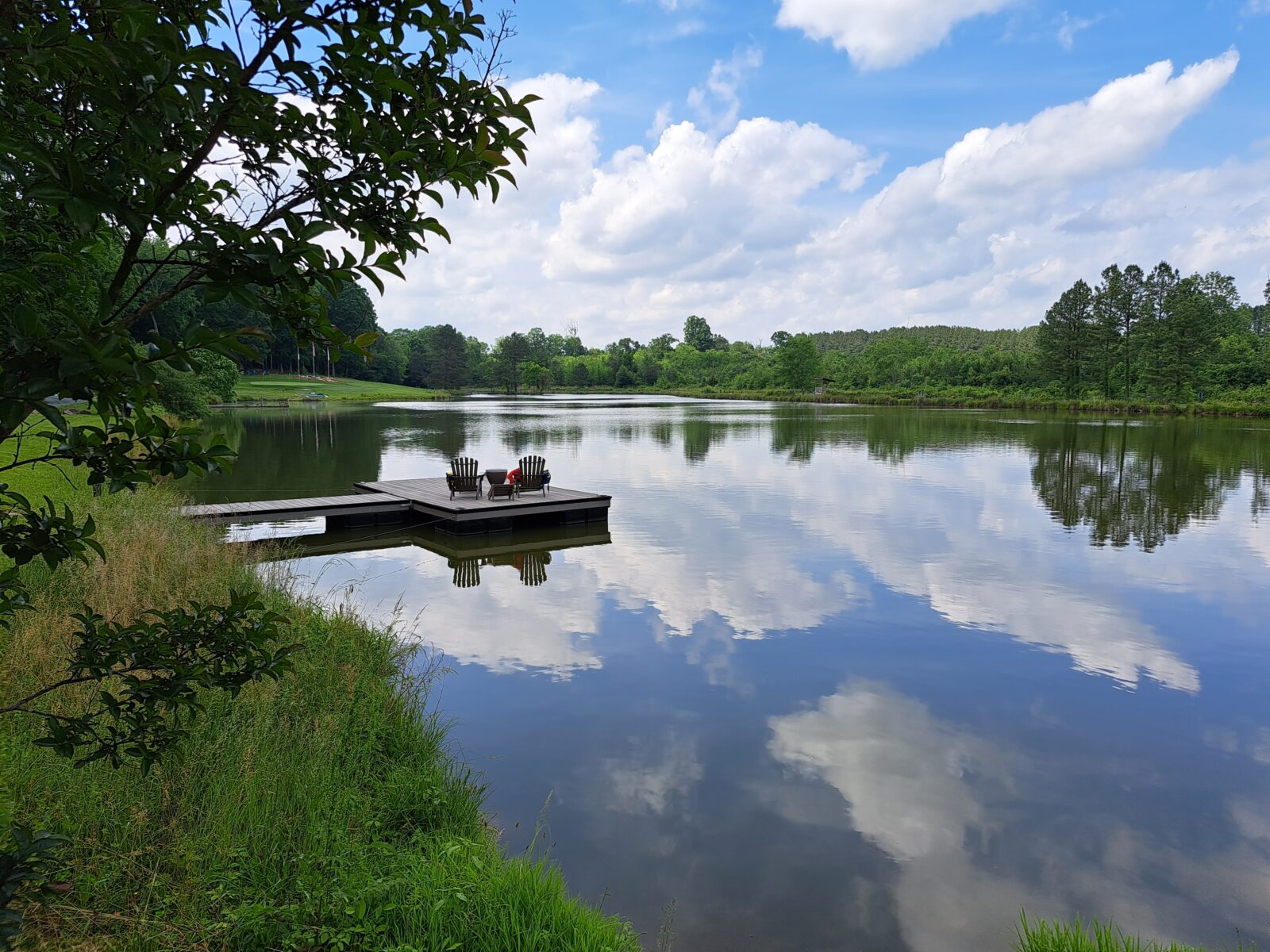
As the seasons change, natural ecological processes like pond turnover begin to take place. Pond turnover is the process in which the oxygen-rich water layer at the top mixes with the low-oxygen layer at the bottom of the pond. This event can be triggered by abrupt changes in water temperature, weather events, high winds, or after dry periods. When water layers with different temperatures and oxygen levels mix, it can lead to poor water quality and oxygen depletion. While pond turnover is normal, it can present challenges and put aquatic life at risk if oxygen levels quickly drop. Learn what causes a pond to turn over and how you can reduce the risks it can pose to aquatic life.
What Causes Pond Turnover?
Pond turnover is driven by temperature changes and variations in water density. During warmer months, the surface water of a pond heats up, creating a stratified layer of warmer, less dense water floating above the cooler, denser layers of water below. As autumn arrives and temperatures begin to drop, the cooler air chills the surface water, causing it to become denser and eventually sink. This process can lead to a mixing of the water layers, redistributing nutrients and oxygen (or lack thereof) throughout the pond. Typically, turnover occurs in the fall and spring, although the exact timing can vary based on location, climate conditions, and waterbody depth. Summer thunderstorms can also trigger pond turnover due to the cool rain suddenly changing the water temperature. No matter where your pond is located, pond turnover is a potential risk, and it’s important to know when it occurs and how you can prevent it.
The Risks of Pond Turnover
Pond turnover poses several risks that can significantly impact aquatic ecosystems. One of the primary concerns during pond turnover is the occurrence of low oxygen levels. As the low-oxygen, cooler water at the bottom of the pond mixes with warmer, oxygen-rich water, it can lead to decreased levels of dissolved oxygen, which fish and other aquatic life rely on for survival. If you ever notice fish swimming to the surface, gasping for air, it could be a sign that your pond has turned over and is struggling with low dissolved oxygen levels. Additionally, this mixing can stir up sediments and bottom organic matter that contain excess nutrients, such as phosphorus and nitrogen, which can lead to poor water quality issues and foul smells. The combination of low oxygen levels, poor water quality, and sudden shifts in nutrients can create a detrimental environment for fish and other aquatic organisms, often resulting in fish kills. Let’s explore the two types of pond turnover and how they can impact your waterbody.
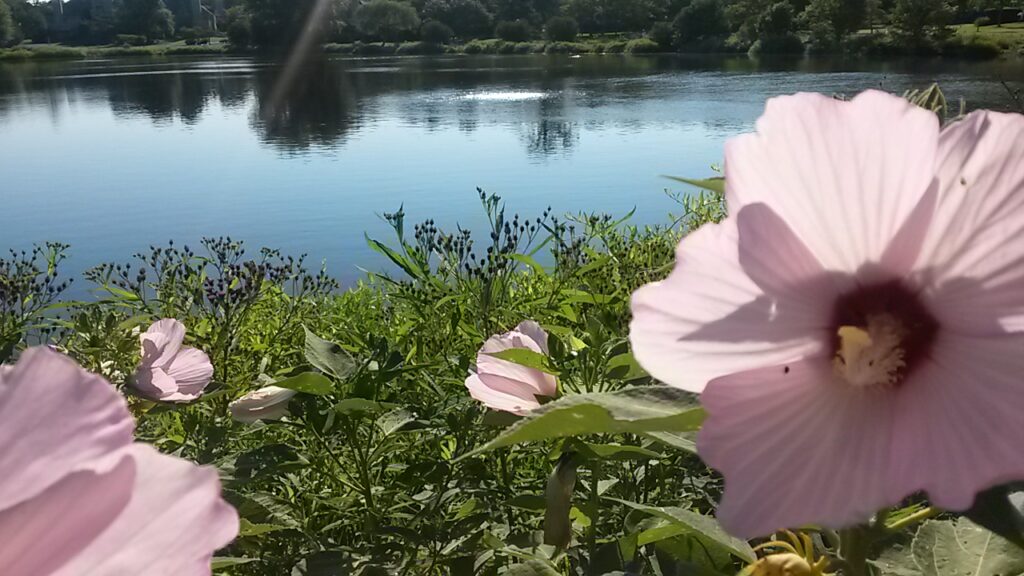
Spring Turnover
Spring pond turnover begins when ice starts to melt, which allows sunlight to reach deeper into the water column. As the surface water warms, reaching 39 F and becoming heavier, it sinks to the bottom where it mixes with the bottom layers, creating a more uniform temperature throughout the waterbody. Wind and currents play a crucial role in this process by mixing the water, which helps to redistribute the layers. This mixing causes the oxygen-rich water at the surface to interact with the nutrient-rich and low-oxygen waters found at the bottom of the pond. This process creates a uniform temperature and density throughout the water column, allowing fish to thrive at all depths.
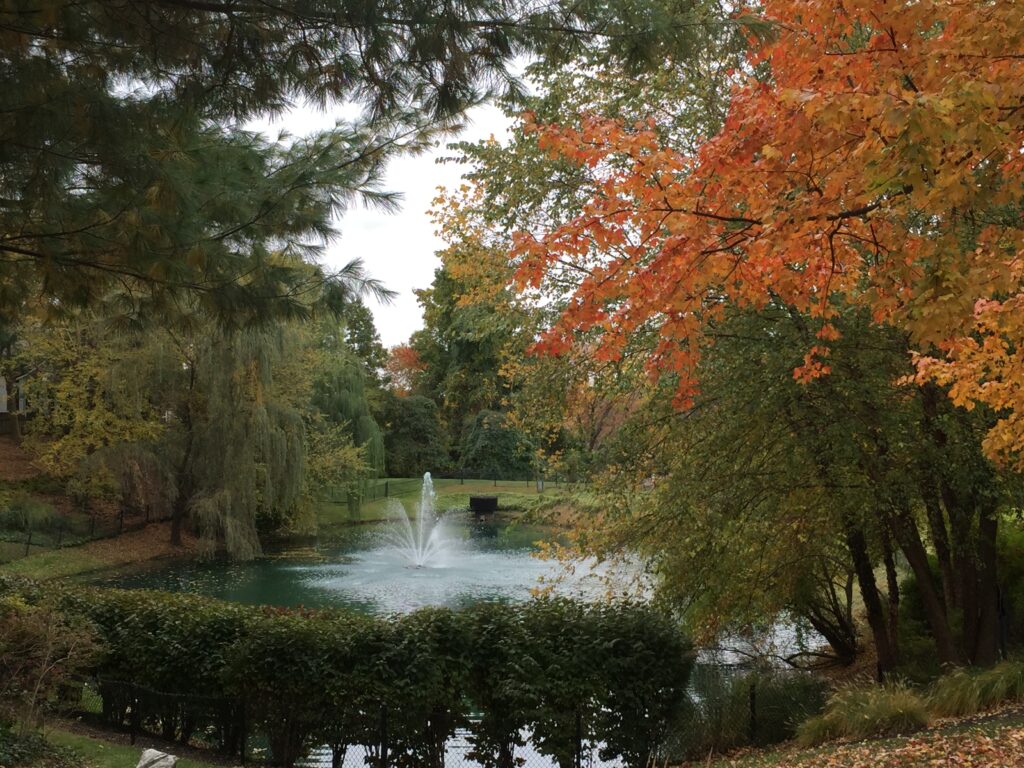
Fall Turnover
The process of fall pond turnover starts when the surface water cools down with the changing temperatures. As the surface water cools near 50 F, its density increases, causing it to sink and mix with the deeper layers of water. This movement allows the cooler, denser water to mix with the water below, combining oxygen-rich surface water with the low-oxygen, nutrient-rich bottom water. This process can happen quickly which causes a drop in dissolved oxygen levels throughout the water column, creating a stressful environment for fish and other wildlife. This sudden change in dissolved oxygen levels is the most common cause of fish kills. In some cases, the low oxygen levels can improve on their own within a few days, however, if you notice dead fish in your lake or pond, make sure to call an expert to reduce future harm to aquatic life. In addition to creating a stressful environment for aquatic life, fall pond turnover can lead to changes in the color and odor of the water due to the mixing of decaying organic matter that has accumulated over the summer.
Preventing Pond Turnovers
No matter what causes your pond to turn over, there are several solutions that can help you maintain a healthy aquatic environment. One widely used method is aeration, which introduces oxygen into the water through floating fountains, surface aerators, or submersed aerators. Floating fountains and surface aerators are particularly effective in shallow ponds that experience high temperatures, as they help to maintain a stable temperature gradient and prevent stratification. Submersed aerators are recommended in deeper ponds to help mix the water column and introduce dissolved oxygen throughout the waterbody, helping reduce stratification. Advanced oxygenation technologies are available to help boost dissolved oxygen levels in the deep bottom layers without mixing the water column. In addition, innovations like TryMarine have entered the lake management market to help generate oxygen throughout the water column and sediment if a fountain or aerator is not an option.
Regular water quality testing is also recommended to monitor oxygen levels. With regular testing, lake management experts can identify oxygen levels in each layer of water and recommend strategies to help reduce the risks of a fish kill or poor water quality.
Stay Head of Pond Turnover with Proactive Management
Keeping your lake or pond healthy during turnover can be a difficult task. At SOLitude, our experts can help mitigate the risks of pond turnover and create a healthy, thriving ecosystem. Contact us today to get started!
Explore the Benefits of Aeration
SOLitude Lake Management is a nationwide environmental firm committed to providing sustainable solutions that improve water quality, enhance beauty and preserve natural resources.
SOLitude’s team of aquatic scientists specializes in the development and execution of customized lake, stormwater pond, wetland and fisheries management programs. Services include water quality testing and restoration, algae and aquatic weed control, installation and maintenance of fountains and aeration systems, shoreline erosion control, muck and sediment removal and invasive species management. SOLitude partners with homeowners associations, golf courses, private landowners, businesses and municipalities. SOLitude Lake Management is part of Rentokil, a leading business services company, operating across the United States, Canada and Puerto Rico.
For more information, visit SOLitude Lake Management at solitudelakemanagement.com, and connect on Facebook, LinkedIn, Twitter, Instagram and YouTube.

